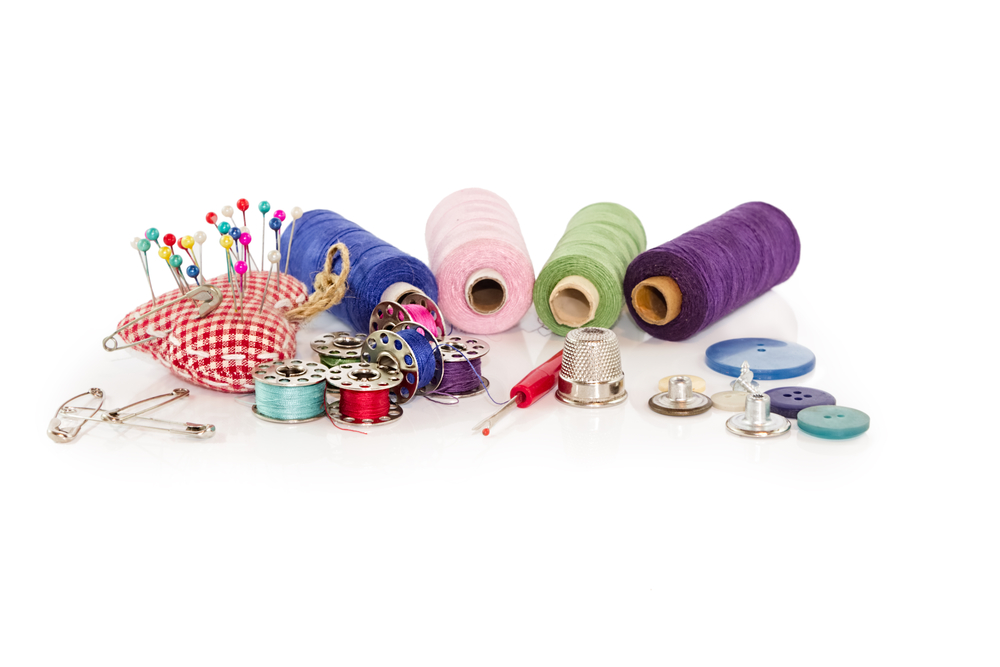Choosing appropriate sewing needles is critical. As small as they appear, they can damage your fabric immensely just like the scissors can. When stitching, selecting the wrong needle leads to missed out stitches in the material. Read about the Singer 4452 Heavy Duty Sewing Machine here.
What are Sewing Needles?
Needles are long, slim, and sharp-pointed tools. The objects are purposely for sewing. All needles for sewing machines contain the same essential parts. The shape and length of the needle parts are what creates the variations.
The needle determines how your sewing machine forms stitches. When choosing the needle size for a particular fabric, you should understand how parts of the sewing machine needles work. The best quality sewing needles come from platinum.
A needle is the main feature for every sewing machine. Overtime, the development of different needle types aims at ensuring that each sewing machine works perfectly. Different machines will incorporate varying sewing needles.
Important Questions to Ask Yourself Before Beginning the Project
Whenever you want to choose the right one, you have to ask yourself some questions regarding the needle system. Is the fabric new or specialized? Is it an old or a new sewing machine? How is the speed of the machine? With such questions, you will always obtain needles that will neither disappoint you or your client in the long run.
The History of the Sewing Needle
The invention of the sewing needle was around 60,000 years ago. It was the period just before agricultural practices began. There was the creation of simple tools like the gouging chisel used to craft other tools from bone and ivory.
This process is the same for which the invention of the first needles came about. The old sewing needles were either bone-made or created from wood. Nowadays, people use mostly gold, nickel, and carbon steel wire to make needles.
Sewing Helped Mankind Survive Cold Weather
Evidence of the first needles was in Central Asia and Western Europe. Unlike presently where you insert the thread through the needle’s eye, the needles then had split heads that held the thread. During the first eras, the needle invention enabled human beings to sew more pairs of fur.
It allowed them to move further and live comfortably in colder climates. Later, the creation of both the string and needle helped people living in colder regions to survive through the ice age that lasted for about 100,000 years.
Uses of Needles
- The needle carries the thread through the entire material to form a loop that the looper mechanism or the hook can pick up.
- It forms a passage in the fabric for the thread to penetrate
- It enables the thread to pass through the loop created on the machine by the looper mechanism.
- The pointer of the needle forms the spot of contact with the material. It functions to pierce through the fabric.
Choosing the Correct Needle for the Job
Using the appropriate needle types and sizes is essential. It may be overwhelming to select the best needle; however, it is not a difficult task. Mostly, all needles look almost alike.
Take your time whenever you are choosing the needles for sewing. Over time, you can easily recognize their differences based on eyes, tips, shafts, groves, and shank. The factors below will guide you in selecting the right needle for your machine and fabric:
The Different Types of Needle
For most tools, you will have the general types and the specialty ones. With home decor-related jobs, select the general needles. They work perfectly for synthetics, knits, and woven fabrics.
Materials that go well with the specialty needle types include:
Leather– requires chisel-pointed needles especially for genuine leather
Denim– requires needles with a sharp, strong point for canvas, denim and tightly-knitted fabrics
The Different Types of Needle Points
Depending on the type of machine and fabric, you can select either the universal, sharp, or ball pointed needle.
- Ball-Pointed – made for knit fabric such that the point glides between the loops without troubling the fabric’s fibers. This needle-point usually stitches the non-straight fabrics.
- Sharp-Pointed – used for woven fabrics, and is especially essential when straight sewing lines and stitching tops.
- Universal Pointed – it has a sharp point that is slightly rounded and contains the feature of both the sharp and the ball-point needles. It works for woven fabric. If you are not satisfied with the stitches that your machine forms using the universal needle, you can switch to either sharp or ball-point needle.
Needle Size in Relation to Material
Needle size is the first thing that you usually notice on the package. They typically appear as fraction numbers. The secret to selecting the right needle size lies in the statement: ‘the lower the number, the smaller the eye, and the finer the needle.’
For instance, if your purpose is to sew clothing with pure material, you need a fine needle such as 60/8. Selecting one like 120/19 will leave wider holes on your clothing.
Conversely, if you want to sew an upholstery material, a 60/8 needle will easily break or bend. With the 120/19 needle size, it will give strength to pierce through such heavy fabric. It also contains a broader eye to carry through the heavier thread that denser fabric needs.

